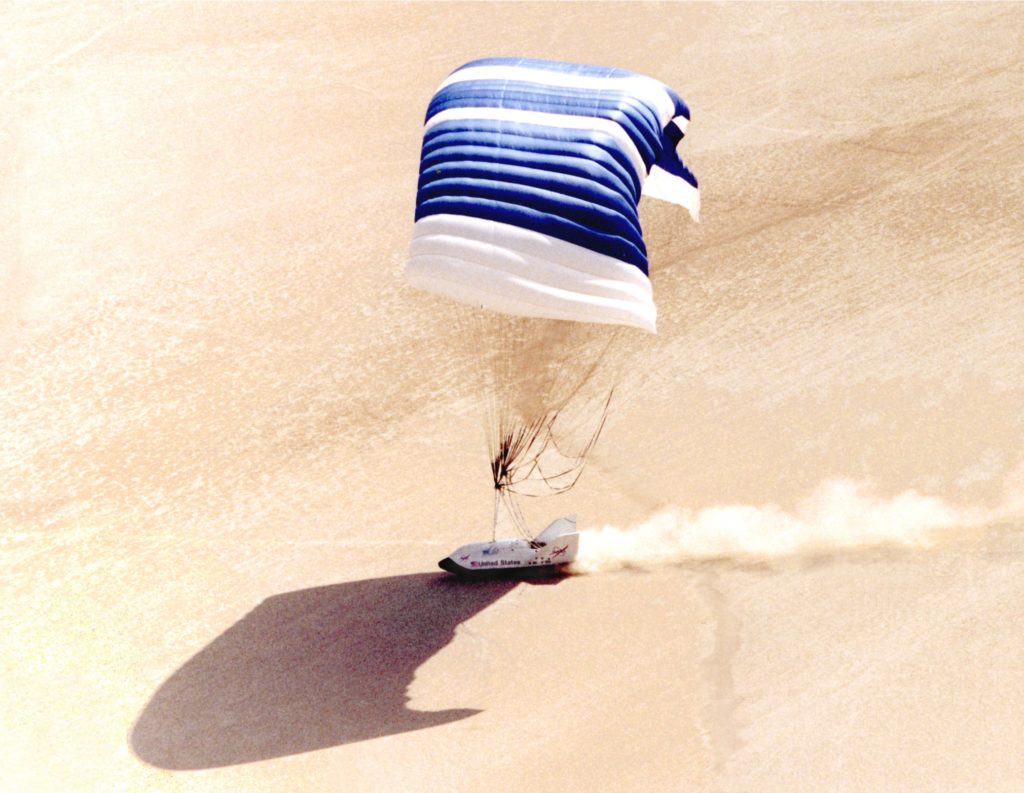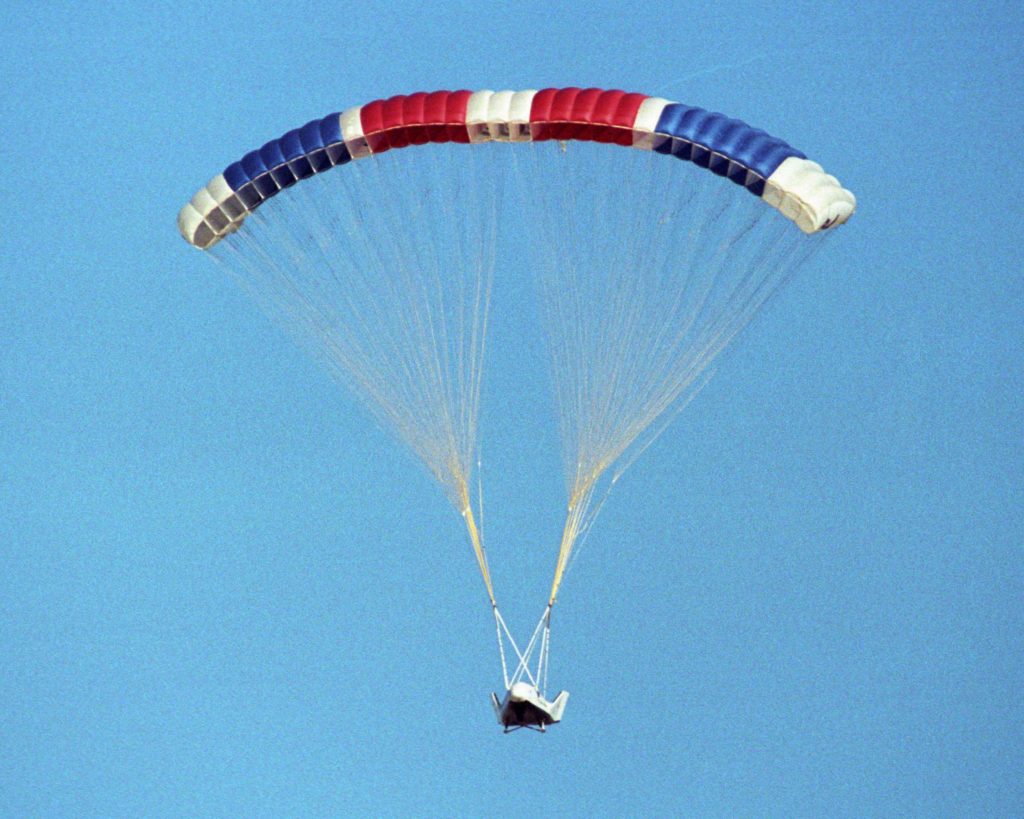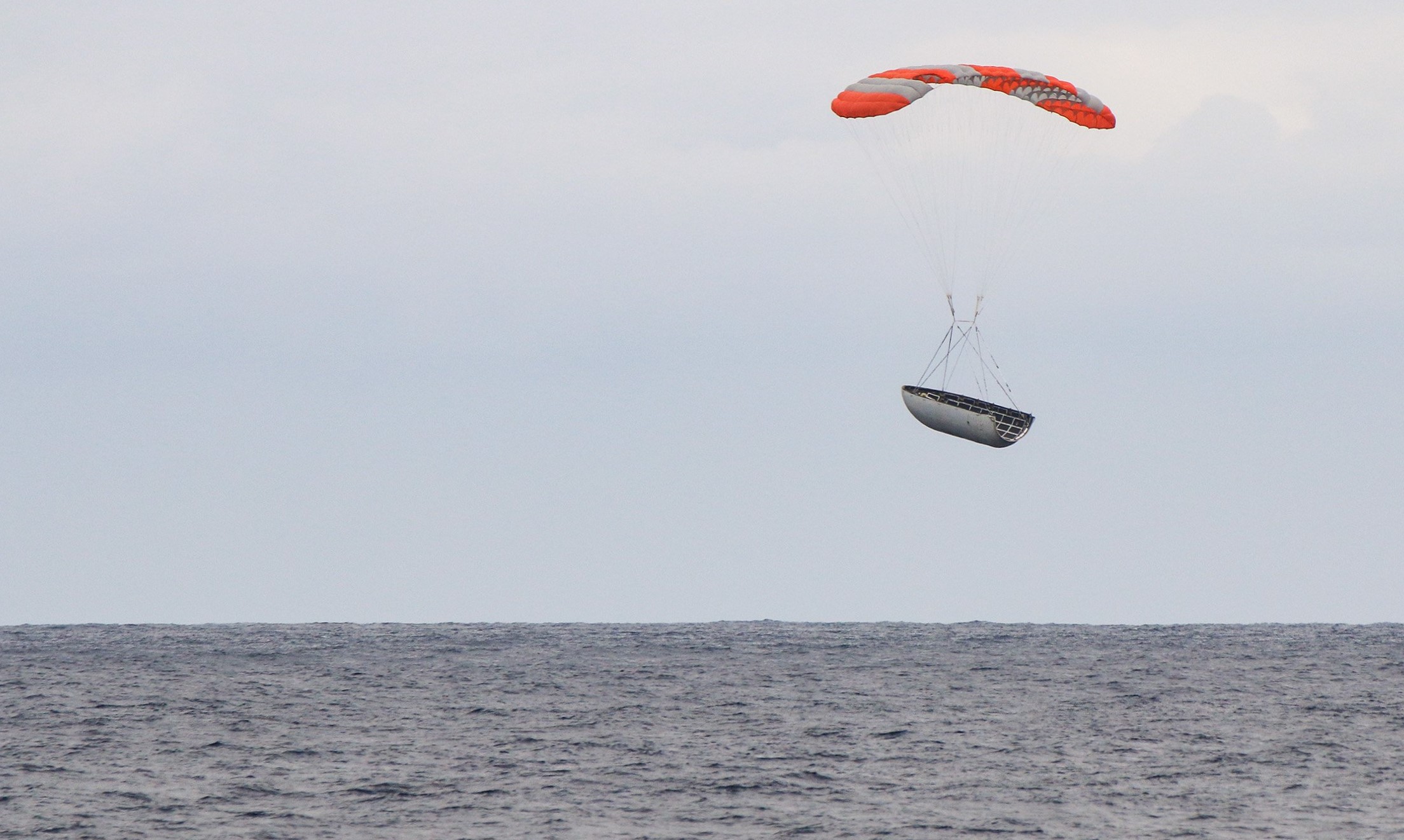

News
SpaceX will use a parasail guidance system to land Falcon 9’s fairing into a huge net
SpaceX recovery vessel Mr Steven officially departed Port of Los Angeles on the evening of July 23 and is speeding towards its first Falcon 9 fairing recovery attempt since a major series of refits and upgrades. With massive new arms and usable net area increased fourfold, chances are better than they’ve ever been for the iconic clawboat to at last snag its first true ‘catch’ of a parasailing payload fairing.
Set to be stationed roughly 900 km (600 mi) southwest of the California coast, Mr Steven’s vast new net should dramatically even the playing field, cutting the effective error margin for each fairing catch attempt by as much as 60% on its own. An extra ~30 meters of net both length and width-wise would functionally act as a cushion for the ~50-meter accuracy the fairings have demonstrated thus far (i.e. halves missed Mr Steven’s smaller, original net by 50 m).
Still, the question remains for many people: how exactly does Mr Steven ‘catch’ a clamshell fairing half, and how does that fairing half find its way to Mr Steven?
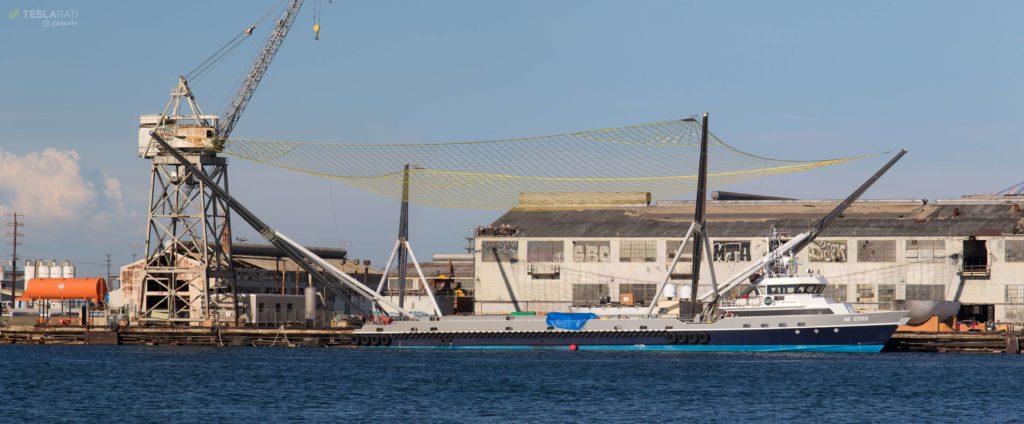
A parasail and a prayer
Each Falcon 9 fairing is a two-piece 1600 kg sandwich of carbon fiber composites and aluminum honeycomb, as well as internal dressings of soundproofing panels, cold nitrogen gas thrusters for attitude control in vacuum, and finally the parafoil and control hardware/avionics necessary to safely recover the fragile halves. Stretching 13m long and 5.2m wide (43ft x 17ft), SpaceX has partially worked with contractors already experts in the art of autonomously guiding parasails with payloads up to 10,000 kg (22,000 lb), and doing so with some level of accuracy.
Ultimately, GPS-guided parafoils have been done successfully many times over in the past two or so decades. For the most part, the problems preventing SpaceX from recovering fairings in Mr Steven’s net have been almost entirely solved: the fact that six or more halves have been recovered intact after their Falcon 9 launches confirm that much. SpaceX engineers have somehow found a way to allow a highly flexible, lightweight, and aerodynamically awkward lifting body to survive a journey from heights of 110+ km and speeds of several kilometers per second.
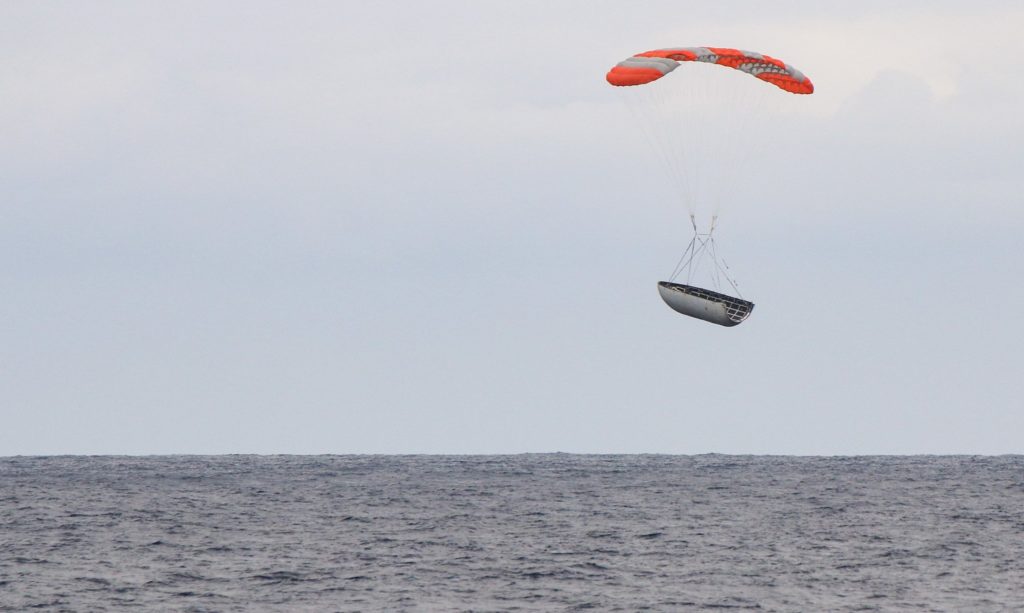
One half of SpaceX’s Iridium-6/GRACE-FO just moments before touchdown on the Pacific Ocean. (SpaceX)
Per the extraordinarily minimalist appearance of each half’s parafoil recovery hardware and the lack of any clear control mechanism, it’s very likely that SpaceX has sided with an in-canopy (canopy=the parachute) system of actuators tasked with subtly warping the parafoil, comparable in functionality to a crude replica of a bird’s wing.
When in doubt, copy birds
Birds fly with such extraordinary precision thanks to granular control surfaces known by most as “feathers”, whereby slightly tweaking the location of feathers or changing the shape of the wing can result in a huge range of behaviors. In-wing actuation and control is an elegant – if complex – solution for the problems posed by parafoil guidance. In this case, SpaceX’s contractor (MMIST) likely deserves at least some of the credit for several nearly successful catch attempts thus far, delivering each unpowered fairing half from an altitude of 110+ kilometers, speeds of more than 2 kilometers per second, and parabolic trajectories stretching over 800 kilometers to a square roughly 100m by 100m.
If each halve’s accuracy can be cut by 75% of that to an area of 50m by 50m, SpaceX and Mr Steven should have no trouble in reliably and routinely catching Falcon 9 payload fairings for rapid reusability, perhaps one day translating into a similar approach for the recovery of Falcon 9’s orbital upper stages and SpaceX’s Crew and Cargo Dragon spacecraft. Mr Steven’s new net upgrade is meant to accomplish exactly that by offering a much larger surface area for Falcon fairings to ‘aim’ at.
- NASA’s X-38 project demonstrated the functionality of autonomous parasail guidance in 1999. (NASA)
- By tweaking, pulling, and tensing or loosening any number of those lines with servo motors and actuators, one can very accurately control the flight characteristics of a parafoil. (NASA)
- From left to right, my best guess for each fairing is PAZ, Iridium-6 Half 1, Iridium-5, and Iridium-6 Half 2. (Pauline Acalin)
Once the massive 800-kilogram components can be captured in flight by Mr. Steven, it should be a fairly simple prospect for SpaceX to move from recovery to reuse, potentially saving as much as 10% ($6m) of the cost of each Falcon 9 and Falcon Heavy launch in one simple, fell swoop. Perhaps even more importantly, fairing reuse would remove some of the pressure placed on SpaceX’s composite production floor, which currently must support the fabrication of dozens of fairing halves, booster interstages, payload adapters, Falcon Heavy nose cones, and much more, including smaller subassemblies required for both Crew and Cargo Dragons.
BFR is gonna need all the composite design and manufacturing expertise it can get.
For prompt updates, on-the-ground perspectives, and unique glimpses of SpaceX’s rocket recovery fleet (including fairing catcher Mr Steven) check out our brand new LaunchPad and LandingZone newsletters!
News
Tesla begins Robotaxi certification push in Arizona: report
Tesla seems serious about expanding its Robotaxi service to several states in the coming months.

Tesla has initiated discussions with Arizona transportation regulators to certify its driverless Robotaxi service in the state, as per a recent report from Bloomberg News. The move follows Tesla’s launch of its Robotaxi pilot program in Austin, Texas, as well as CEO Elon Musk’s recent comments about the service’s expansion in the Bay Area.
The Arizona Department of Transportation confirmed to Bloomberg that Tesla has reached out to begin the certification process for autonomous ride-sharing operations in the state. While details remain limited, the outreach suggests that Tesla is serious about expanding its driverless Robotaxi service to several territories in the coming months.
The Arizona development comes as Tesla prepares to expand its service area in Austin this weekend, as per CEO Elon Musk in a post on X. Musk also stated that Tesla is targeting the San Francisco Bay Area as its next major market, with a potential launch “in a month or two,” pending regulatory approvals.
Tesla first launched its autonomous ride-hailing program on June 22 in Austin with a small fleet of Model Y vehicles, accompanied by a Tesla employee in the passenger seat to monitor safety. While still classified as a test, Musk has said the program will expand to about 1,000 vehicles in the coming months. Tesla will later upgrade its Robotaxi fleet with the Cyercab, a two-seater that is designed without a steering wheel.
Sightings of Cybercab castings around the Giga Texas complex suggests that Tesla may be ramping the initial trial production of the self-driving two-seater. Tesla, for its part, has noted in the past that volume production of the Cybercab is expected to start sometime next year.
In California, Tesla has already applied for a transportation charter-party carrier permit from the state’s Public Utilities Commission. The company is reportedly taking a phased approach to operating in California, with the Robotaxi service starting with pre-arranged rides for employees in vehicles with safety drivers.
News
Tesla sets November 6 date for 2025 Annual Shareholder Meeting
The automaker announced the date on Thursday in a Form 8-K.

Tesla has scheduled its 2025 annual shareholder meeting for November 6, addressing investor concerns that the company was nearing a legal deadline to hold the event.
The automaker announced the date on Thursday in a Form 8-K submitted to the United States Securities and Exchange Commission (SEC). The company also listed a new proposal submission deadline of July 31 for items to be included in the proxy statement.
Tesla’s announcement followed calls from a group of 27 shareholders, including the leaders of large public pension funds, which urged Tesla’s board to formally set the meeting date, as noted in a report from The Wall Street Journal.
The group noted that under Texas law, where Tesla is now incorporated, companies must hold annual meetings within 13 months of the last one if requested by shareholders. Tesla’s previous annual shareholder meeting was held on June 13, 2024, which placed the July 13 deadline in focus.
Tesla originally stated in its 2024 annual report that it would file its proxy statement by the end of April. However, an amended filing on April 30 indicated that the Board of Directors had not yet finalized a meeting date, at least at the time.
The April filing also confirmed that Tesla’s board had formed a special committee to evaluate certain matters related to CEO Elon Musk’s compensation plan. Musk’s CEO performance award remains at the center of a lengthy legal dispute in Delaware, Tesla’s former state of incorporation.
Due to the aftermath of Musk’s legal dispute about his compensation plan in Delaware, he has not been paid for his work at Tesla for several years. Musk, for his part, has noted that he is more concerned about his voting stake in Tesla than his actual salary.
At last year’s annual meeting, TSLA shareholders voted to reapprove Elon Musk’s compensation plan and ratified Tesla’s decision to relocate its legal domicile from Delaware to Texas.
Elon Musk
Grok coming to Tesla vehicles next week “at the latest:” Elon Musk
Grok’s rollout to Tesla vehicles is expected to begin next week at the latest.

Elon Musk announced on Thursday that Grok, the large language model developed by his startup xAI, will soon be available in Tesla vehicles. Grok’s rollout to Tesla vehicles is expected to begin next week at the latest, further deepening the ties between the two Elon Musk-led companies.
Tesla–xAI synergy
Musk confirmed the news on X shortly after livestreaming the release of Grok 4, xAI’s latest large language model. “Grok is coming to Tesla vehicles very soon. Next week at the latest,” Musk wrote in a post on social media platform X.
During the livestream, Musk and several members of the xAI team highlighted several upgrades to Grok 4’s voice capabilities and performance metrics, positioning the LLM as competitive with top-tier models from OpenAI and Google.
The in-vehicle integration of Grok marks a new chapter in Tesla’s AI development. While Tesla has long relied on in-house systems for autonomous driving and energy optimization, Grok’s integration would introduce conversational AI directly into its vehicles’ user experience. This integration could potentially improve customer interaction inside Tesla vehicles.
xAI and Tesla’s collaborative footprint
Grok’s upcoming rollout to Tesla vehicles adds to a growing business relationship between Tesla and xAI. Earlier this year, Tesla disclosed that it generated $198.3 million in revenue from commercial, consulting, and support agreements with xAI, as noted in a report from Bloomberg News. A large portion of that amount, however, came from the sale of Megapack energy storage systems to the artificial intelligence startup.
In July 2023, Musk polled X users about whether Tesla should invest $5 billion in xAI. While no formal investment has been made so far, 68% of poll participants voted yes, and Musk has since stated that the idea would be discussed with Tesla’s board.
-

 Elon Musk1 week ago
Elon Musk1 week agoTesla investors will be shocked by Jim Cramer’s latest assessment
-

 Elon Musk3 days ago
Elon Musk3 days agoElon Musk confirms Grok 4 launch on July 9 with livestream event
-

 Elon Musk15 hours ago
Elon Musk15 hours agoxAI launches Grok 4 with new $300/month SuperGrok Heavy subscription
-

 News7 days ago
News7 days agoTesla Model 3 ranks as the safest new car in Europe for 2025, per Euro NCAP tests
-

 Elon Musk2 weeks ago
Elon Musk2 weeks agoA Tesla just delivered itself to a customer autonomously, Elon Musk confirms
-

 Elon Musk1 week ago
Elon Musk1 week agoxAI’s Memphis data center receives air permit despite community criticism
-

 Elon Musk2 weeks ago
Elon Musk2 weeks agoTesla’s Omead Afshar, known as Elon Musk’s right-hand man, leaves company: reports
-

 News2 weeks ago
News2 weeks agoXiaomi CEO congratulates Tesla on first FSD delivery: “We have to continue learning!”

